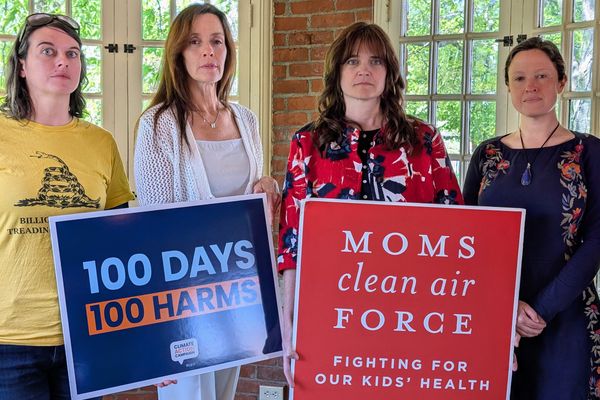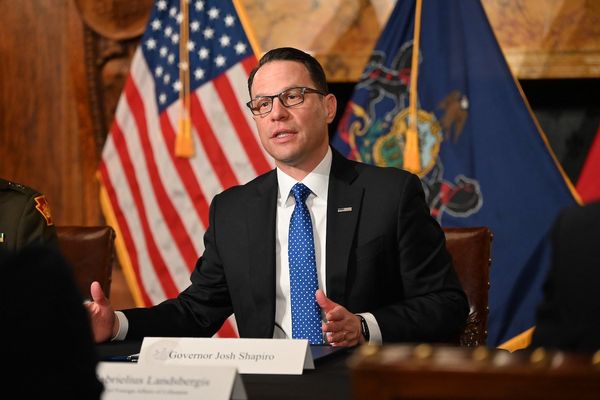
New study confirms: Structural racism in STEM programs needs fixing
“Our study indicates that something is happening in the classes themselves."
A groundbreaking paper published last month in PNAS Nexus, a sibling journal to the Proceedings of the National Academies of Science, offers stark quantitative data showing the continued blight of structural racism in academic STEM (science, technology, engineering and mathematics) programs in the United States.
Using a massive dataset of 110,000 students across six large research universities, the study found that white males are still more likely than other groups to earn STEM-related degrees even when they have a poorer academic record. Just as important, the study controlled for the high school preparation of students who intended to study STEM, assuming average grade points of 3.57 and ACT composite scores of 26 (placing students in the 83rdpercentile).
The study offers some of the most stark evidence yet that even when students enter college with equal qualifications, white males are rewarded more richly for their grades in introductory courses while students from underrepresented populations are more severely punished.
One of the study’s authors, Nate Brown, said that, given that the study had controlled for similar high school prep, he was “surprised and horrified” by how wide the gulf was between white and Black students after they went through their first-term collegiate STEM classes. The gulfs are so wide that co-researcher Chad Topaz said the findings should prod colleges to analyze how they teach, rather than continuing to blame disparities on individual deficiencies among Black, Latinx, Indigenous, and female students.
Their study indicates that it is not the students, but the culture in core introductory STEM courses that is deficient.
“Our study indicates that something is happening in the classes themselves,” Topaz said, “especially for students from already marginalized groups who receive a low grade in introductory courses. The system somehow treats them differently.”
Brown is a mathematics professor at Penn State who runs the university’s STEM Diversity Lab; Topaz is a professor of complex systems at Williams College and co-founder of the Institute for the Quantitative Study of Inclusion, Diversity, and Equity. They co-authored the study along with Neil Hatfield, another Penn State math professor and lab affiliate.
Perpetuating disparities

“The findings that students with the same prep and interests have very different outcomes is a sign of structural racism."
Credit: Annie Spratt/Unsplash
According to the study’s findings, a white male who gets a grade of at least a C in all first-term core courses for math, statistics, chemistry, biology, physics, computer science or other related technology fields has a 48% chance of graduating with a STEM degree. But a Black male who does the same thing has only a 31% chance. A Black female who does the same thing has only a 28% chance. Put more concretely, every other white male with at least a C in his first-term classes graduates in STEM, whereas only one of three Black men and only one of four Black women graduate.
Worse, if a white male gets one D or F in, or withdraws from, an introductory core course, he still has a 33% probability of graduating. That’s still a higher probability of graduating than a Black man or woman has with no D’s, F’s or withdrawals.
While the gaps between other underrepresented groups are not as dramatic, white males are still more likely to graduate than similarly achieving Latinx, Native American, and white female students. An Indigenous woman with no withdrawals from introductory classes has only a slightly better chance of graduating than a white male with one withdrawal.
“There are two story lines,” Brown said. “The findings that students with the same prep and interests have very different outcomes is a sign of structural racism. The other—that the environment is less negative for white men with bad grades—is a sign of how the structure perpetuates disparities.”
Stories line up

"The culture of STEM is a racial hierarchy where whites and some Asians are at the top and Black and Indigenous are at the bottom."
Credit: Emmanuel Ikwuegbu/Unsplash
These latest findings are completely in line other recent studies. A 2019 persistence study by researchers at the University of Texas Austin and Florida International University found that among undergraduate students who declare a STEM major, 58% of white students go on to earn a STEM degree, compared to 43% of Latinx students and 34% of Black students. That study found “evidence of white privilege in STEM degree attainment that is not mirrored in other major fields,” bolstering a “compelling case that STEM degree programs and college classrooms are purposively constructed as exclusionary spaces where students must essentially prove that they deserve to stay.”
The findings also line up with personal narratives documented by many long-time researchers of STEM disparities. Ebony McGee of Vanderbilt University, author ofBlack, Brown, Bruised: How Racialized STEM Education Stifles Innovation, said the study by Brown, Topaz and Hatfield “proved quantitatively what we’ve known qualitatively. The culture of STEM is a racial hierarchy where whites and some Asians are at the top and Black and Indigenous are at the bottom. It’s such a normalized system that we don’t question it or interrogate it.”
Giovanna Guerrero-Medina, a trained molecular biologist who is executive director of Ciencia Puerto Rico and director of Yale Ciencia Initiative, called the study “important for a national conversation.” Her organizations build networks for Puerto Rican scientists and improve K-12 STEM education to make it more relevant in the Puerto Rican context.
“The finding that high school prep doesn’t have an impact on progression compared to majority populations with similar achievement means that the “deficit-based” model (in which programs try to “fix” allegedly deficient students instead of the system) does not explain these disparities. It speaks to how issues holding back students who are marginalized in science are not the fault of the students but embedded in our system.”
Both McGee and Guerrero-Medina cited countless ways the system denigrates and discourages underrepresented candidates for STEM degrees. McGee wrote in 2020 for The Conversation about how a Black electrical engineering doctoral student who was a keynote speaker at a conference, was assumed to be a hotel cleaning woman by a white man attending the same conference, and how a Black male computer science doctoral student was dumped as a lab partner by a visiting scholar who only wanted to work with white and Asian students.
Guerrero-Medina said the general environment of a traditional core class is hardly inviting. “When a first-year Latina enters an engineering course, she’ll likely see a male professor, peers who are white and male and when she reads in her textbooks the discoveries and advances in her field, she’s not going to see someone like her making those discoveries and advances. From the beginning, the system tells you don’t belong.”
Kristyn Carter, a postdoctoral associate in Yale’s Department of Molecular, Cellular and Developmental Biology, and the first Black person to earn a doctorate in immunology at the University of Glasgow, said she was nearly derailed in a first-year science class. She and a white friend received the same mediocre grade on an assignment. “My friend was told to get a tutor,” Carter said. “I was told to switch fields.”
Predictable results
The systemic drumbeat of negative messages is a huge part of why Black adults earn only 7% of STEM bachelor’s degrees and only 6% of research doctorates in a nation that is nearly 14% Black. It helps illuminate why Latinx adults earn just 12% of STEM bachelor’s degrees and 6% of research doctorates in a nation that is nearly 19% Latinx, according to the Pew Research Center. Women are half the US population but earn only a respective 19% and 22% of bachelor’s degrees in computer science and engineering and only between a quarter to a third of master’s and research doctoral degrees in math and physical science.
These numbers result in a workplace with paltry participation from underrepresented populations. Only 5% of engineering jobs and 6% of life science jobs go to Black workers; only 8% of math and physical science jobs go to Latinx workers; and only 15% of engineering jobs and 25% of computer jobs go to women, according to Pew.
A vast gulf also exists in perceptions of equal opportunity. In another Pew survey, 62% of Black workers in STEM say they have faced racial discrimination; only 43% of them say the recruitment and hiring process is fair; and, worse, only 37% of Black workers believe they are treated fairly in opportunities for promotion and advancement.
Conversely, 78% of white STEM workers say Black workers are treated fairly in recruitment and hiring and 75% say Black workers are fairly considered for promotion and advancement.
Carter said that a Black person who succeeds against those odds ends up as a “unicorn” in their field. McGee said it’s impossible for a Black person in the sciences to be simply seen as a person working hard. “It’s as if they’re a genius or freak of nature,” McGee said.
Based on the data, most predominately or plurality white universities have yet to take a hard, introspective look at their science teaching cultures. The latest study findings amount to an indictment given that there have long been programs that do retain and graduate Black students who work hard.
Successes in inclusive STEM
When it comes to successfully creating inclusive STEM programs, the most well-known example is the Meyerhoff Scholars Program at the University of Maryland Baltimore County (UMBC). For nearly three and a half decades, the program, largely on the watch of recently retired president Freeman Hrabowski, has pumped out more than 1,400 STEM graduates, two-thirds of whom are from populations normally underrepresented in STEM and the majority of whom are Black.
In an essay last year in the journal Issues in Science and Technology, published by the National Academies of Sciences, Engineering and Medicine, Hrabowski used federal data to show that UMBC is the nation’s top university from which Black STEM graduates went on to earn doctorates in the natural sciences and engineering. With 146 graduates from 2010 to 2019 who worked their way to a PhD, UMBC was the only university aside from Historically Black Colleges and Universities (HBCUs), where more than 100 Black graduates went on to earn doctorates in the same time period.
HBCUs usually provide a more supportive and affirming culture on campus despite far fewer resources than predominantly white institutions, and that seems particularly true in the sciences. North Carolina A&T, Howard, Florida A&M and Spellman each graduated more than 100 Black students who went on to earn doctorates from 2010-2019.
UMBC launched far more Black doctorates than the next three ranked predominantly or plurality white institutions: the flagship University of Maryland College Park (88), the flagship University of Florida (86) and the globally renowned Massachusetts Institute of Technology (63).
Many news stories on Hrabowski’s retirement noted how Meyerhoff grads Kizzmekia Corbett and Jerome Adams respectively led the development of the Moderna coronavirus vaccine and became US Surgeon General. Alum Kyla McMullen became the first African American woman to earn a doctorate in computer science and engineering from the University of Michigan. In the last decade, a few universities, such as the University of North Carolina, Penn State, the University of California Berkeley and U.C. San Diego have begun to embrace UMBC’s model, with positive results.
That model is not rocket science. It is merely holistic. It avoids the trap of demanding students from underrepresented backgrounds contort themselves to conform to white-curated campus cultures that nonetheless dismiss them and pierce them with the arrows of those white faculty who are consciously or unconsciously infected with stereotypes of Black intellectual inferiority. In a Pew survey this year, a third of Black adults currently working in STEM jobs said that in their most recent STEM schooling, someone made them feel as if they could not understand the subject and didn’t belong in a class. A Black student was nearly twice as likely as the average student to be told he she or they didn’t belong in a class.
A 2020 study by researchers at the University of Illinois and the University of Utah found that Black STEM students faced a 57% increased probability of experiencing frequent racial microaggressions from instructors, teaching assistants, and advisers.
“Students of color who were STEM majors overheard racist jokes and comments in the classroom and racial slurs while walking to class,” that study said. “STEM students of color described feeling both hyper-visible and invisible. Students of color felt excluded from groups or social activities. Even worse, students of color reported comments from faculty and staff in positions of authority who dismissed, discouraged, ignored, and even made fun of them.
“The low percentage of Black and Latinx students in STEM majors is not about academic preparation, as some argue; rather, our study suggests that the lack of diversity can be explained by a historical, demographic, behavioral, and psychological dimension of a campus culture that is systemically hostile to students of color.”
UMBC and some other schools put a major portion of responsibility for student success on the faculty. A key component of its model is peer diversity education among faculty members. Hrabowski wrote in his essay: “Educational institutions can help bridge this gap by taking stock of some of their own practices. For example, faculty should not merely act as advisors but also be champions for their underrepresented minority students—connecting them to faculty career opportunities and strongly supporting their applications. In addition, institutions should implement policies that encourage their departments to engage in broader, more equitable faculty searches.”
Schools like UMBC also bring STEM students from underrepresented backgrounds onto campus six weeks early before their first semester to help them form self-supporting communities and study groups. One example is Northeastern University, which for nearly a half century has honed its own model to retain and graduate engineering students from underrepresented populations. In addition to helping students form communities, helping to them to get to know faculty ahead of the actual start of first-year classes and internal faculty diversity workshops, Northeastern gets students into internships early in their schooling and has created a more inclusive curricula to reflect the discoveries and advances by scientists of color, women, lesbian, gay, transgender, or queer.
Northeastern’s not-so-secret sauce
Richard Harris, an associate dean of diversity, equity and inclusion in Northeastern’s School of Engineering and its director of the school’s program in multicultural engineering, said a huge key for future success in STEM is experiential learning—for students to quickly see the relevance of engineering in their lives and their communities. The engineering school boasts a 98% retention rate and 90% graduation rate for Black and Latinx students, on par with the entire university.
Northeastern’s engineering school produced the university’s first-ever Rhodes scholar, civil engineering student Logan Jackson, a Black woman. At Northeastern, she did co-ops and internships with several major construction and computer companies. The school says it has 2,100 co-op employment partners in 27 countries. In the university’s press release about her being in the Rhodes class of 2016, Jackson credited the co-ops for giving her “so many skills you’d never think to learn or might not be exposed to in classroom. I feel like when I graduate, I’ll be getting two degrees—a civil engineering degree, and a work-experience degree.”
Harris, whom I know as a fraternity brother, said the co-ops help the students “play the role of being on a team and the company gets the advantage of getting to know them. It’s part of formalized recursive learning that allows students to reflect on their learning and builds their confidence.” In the classroom, Harris said, the deliberate efforts to get faculty to meet students prior to, or early in first-year classes “reduces the chances that faculty are not foreign and alien, and that faculty don’t see students as a number.”
Northeastern’s efforts last year earned the engineering school a $10 million National Science Foundation grant to scale up what works to accelerate the number of engineering graduates from underrepresented groups. UMBC’s efforts inspired the Howard Hughes Medical Institute to launch a $1.5 billion program to support early career scientists from underrepresented populations in their university research labs.
Hopefully, these efforts and those of the handful of other universities who are investing in holistic change will inspire STEM departments across the nation to retire models that attempt only to “fix” underrepresented students of color in STEM while sidestepping the more critical work of fixing themselves.
Under the current system, according to the findings of Brown, Topaz and Hatfield, underrepresented students “are essentially penalized for attributes over which they have no control. Their study, and the proof that universities can successfully graduate STEM students leaves the rest of academia no excuse not to overhaul their programs and eliminate the penalties.
Derrick Z. Jackson is on the advisory board of Environmental Health Sciences, publisher of Environmental Health News and The Daily Climate. He's also a Union of Concerned Scientist Fellow in climate and energy. His views do not necessarily represent those of Environmental Health News, The Daily Climate or publisher, Environmental Health Sciences.
This post originally ran on The Union of Concerned Scientists blog and is republished here with permission.













